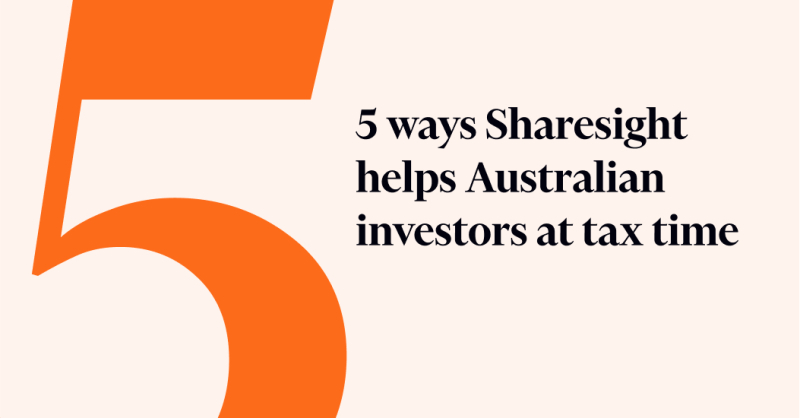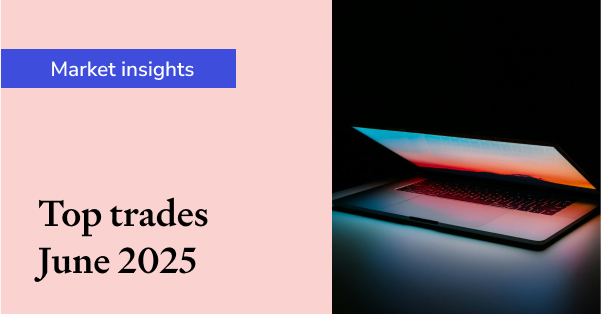What to look for when buying ETFs
Exchange Traded Funds (ETFs) have moved from the investing fringes to the mainstream in just a few short years. The Australian ETF market is closing in on 200 products and now boasts over $40 billion in assets. They also now cover a broad range of asset classes giving investors diversification in a manner than was once only available to professional investors. Growing at around 30% per annum, Sharesight’s own reporting shows almost 40% of SMSF trades are ETFs within the Sharesight user base. Like most things in life, not all ETFs are created equal. Below we highlight 5 things investors should look out for when buying ETFs.

1. ETF management fees
The words ‘ETF’ and ‘Low Fees’ tend to go together like milk and cookies. Proponents of ETFs talk about their low fees as being one of the key advantages of ETFs. This is mostly true. Today the lowest cost ETF available that invests in the broad Australian market has a management fee of 0.07% pa, that’s $7 for every $10,000 invested.
However, just because something is labelled an ETF, does not mean it is low cost. Some ETFs have management fees of over 1%. It’s important investors check what the management costs of an ETF are and make sure they truly are low cost if this is a priority. Most passive strategies are available for under 0.20% pa, and factor or smart beta strategies for under 0.50% pa.
2. Bid/Ask spreads
Low fees are one thing, but are meaningless if the cost of buying and selling an ETF is too high. Of course, ETFs are bought and sold on the share market, just like ordinary shares. There will be brokerage to pay and finding a low cost broker is a way to easily reduce transaction costs.
A cost of buying ETFs that is not easily seen by the investor is the bid/ask spread. This is the difference an ETF can be bought or sold for. The ‘spread’ in the middle is essentially the profit margin made by the ‘market maker’, which is the entity who creates the ETF units.
There’s a wide variation in Bid/Ask spreads across ETFs, and is generally driven by a couple of factors, including:
-
The size and liquidity of the ETF. Bigger ETFs generally have a lower bid/ask spread.
-
The size and liquidity of the underlying market. Larger and more liquid markets generally have a lower bid/ask spread.
The spreads can be compared by simply checking the market depth on the buy and sell side with the difference being the spread. Alternatively, the ASX releases a monthly report which shows the average spreads across all ETFs. For large, liquid markets, you should try to keep bid/ask spreads under 0.10%. For smaller and less liquid markets, this may be as high as 0.30%. Of course if you are a buy/and hold investors, this may not be as important to you as the bid/ask spread is only incurred at the time of buying and selling.
3. ETF size
Above we mentioned that ETFs that are larger in size can have lower Bid/Ask spreads than their smaller counterparts. Another advantage that size gets you is reduced risk of an ETF closing. Since we launched ETF Watch in late 2015, there have been 19 ETFs close. All of these ETFs closed because they simply didn’t get big enough to commercialise, so the managers made the decision to pull the pin on them. This can be frustrating for investors, who may have capital gains realised outside of their control. They’ll then incur more cost in redeploying these funds into another investment.
We always look for a market capitalisation of at least $50 million before investing in an ETF. Once they get to this size they are reasonably safe from being closed down. The good news for investors is about 70% of Australia’s 191 ETFs are greater than $50m in size so there’s plenty of choice.
4. When and how to buy and sell
There’s two rules of thumb when buying and sell ETFs:
Rule 1: Never buy in the first and last 20 minutes of trading for the day
The most likely time for ETFs to trade away from their underlying value is at the start and end of trading. This is because of how the ASX progressively opens and closes the day of trading. It means market makers carry more risk, so pass this on to investors. It’s easy fixed by avoiding start and end of day trading.
Rule 2: Always use a limit price
This is particularly relevant if placing large trades. Unlike normal equities, the market depth that you will see on your broker screen is not the full list of buyers and sellers. A market maker can ‘create’ new ETF units, by buying the underlying assets and turning them into an ETF unit. By using a limit price you’ll give the market maker time to create new units and fulfil your order. A market price on the other hand will fill your order in order of what is shown in the market depth and not give the market maker time to fulfil your order at the better price.
Set your limit to the lowest sell price (if buying) or highest buy price (if selling). If your order is not completely fulfilled within a few minutes, the market may have moved and you will need to adjust your buy or sell price accordingly.
5. ETF management type
At the start of this post we said not all ETFs are created equal. This is particularly true when we look at the management types of ETFs. When ETFs were first developed they were simple low cost ways to access a market, but innovation in the space means ETFs are now available in the full spectrum of management types. These different management types bring different levels of fees and investment risk which investors should remember when considering which ETF to buy.
Passive ETFs
These are the boring capital weighted funds that ETFs are famous for. An S&P/ASX 200 index ETF will invest in the constituents of that index, the 200 largest companies in Australia, by their market capitalisation. We classify 57% of Australia’s ETFs as passive, and from a funds under management perspective these account for about 75% of total funds.
Smart Beta ETFs
Also known as Factor or Strategic Beta ETFs, these track alternative indexes. Throwing away the traditional market capitalisation weighted indexes, Smart Beta index look at other factors when developing their index. This may include things like equal weighting, high yield strategies, certain market niches, and ethical investing.
Smart Beta ETFs are gaining popularity as investors look beyond traditional indexes and some of their limitations. 28% of the ETFs listed on the ASX identify as Smart Beta and they account for about 15% of funds under management.
Active ETFs
Traditionally the realm of the unlisted managed funds, increasingly Active Investors are looking to ETFs as a vehicle to deploy their active strategy. Realising that many self directed investors are not interested in filling out paper based application forms or using an investment platform, active managers are offering their products as both unlisted (traditional managed fund) and listed (Active ETF).
Whilst the Active ETF space is still small, accounting for just 15% of ETFs and 10% of total funds under management, we expect huge growth in this space over the next few years.
More growth in the ETF market expected
The ETF market has recorded 30% year on year growth for a number of years now and more and more investors are seeing the benefits these bring through their simplicity of buying and selling, diversification benefits and low cost. We don’t see this demand abating, and the good news for investors is the options available to them are only going to increase a result. Navigating this ever growing list of ETFs can be a daunting task, but the good news is ETF Watch has been developed to help you find the ETF that meets your needs. Check it out for yourself.
This is a guest post from Steve Bull from ETF Watch. ETF Watch is Australia’s home of ETFs and LICs and including a searchable database of ETFs available in Australia, allowing you to find the ETF that best meets your needs. Check out ETF Watch here. \
Disclaimer: The above article is for informational purposes only and does not constitute a product recommendation, or taxation or financial advice and should not be relied upon as such. Please check with your adviser or accountant to obtain the correct advice for your situation.
FURTHER READING

Sharesight product updates – July 2025
This month's focus was on rolling out predictive income forecasting, as well as improved cash account syncing across different brokers and currencies.

5 ways Sharesight helps Australian investors at tax time
Learn how Sharesight’s Australian tax features can not only help you complete your tax return, but also save you time and money at tax time.

Sharesight users' top 20 trades – June 2025
Welcome to the June 2025 edition of Sharesight’s monthly trading snapshot, where we look at the top buy and sell trades by Sharesight users in all markets.